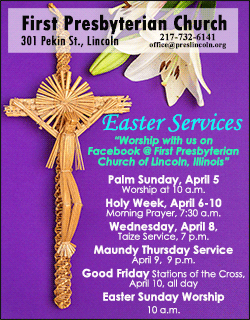|
 I was driving on sand-covered roads, beneath downed power lines
and past a giant floating casino pushed onto the shore within a day of Hurricane
Katrina hitting the Gulf Coast in late August 2005. Our sister newspaper in
Gulfport, Mississippi, needed help as they covered their trashed community and
dealt with their homes after a 26-foot swell of water flooded them. I was driving on sand-covered roads, beneath downed power lines
and past a giant floating casino pushed onto the shore within a day of Hurricane
Katrina hitting the Gulf Coast in late August 2005. Our sister newspaper in
Gulfport, Mississippi, needed help as they covered their trashed community and
dealt with their homes after a 26-foot swell of water flooded them.
I saw firsthand what the response to a disaster looks like.
There were government pronouncements and press conferences, but days stretched
into weeks as people waited. No one seemed to be in charge, and the more distant
the government unit the more it obstructed rather than helped.
What did work were things closest to the disaster. Help came from locals helping
locals. It came from churches and charities. And it came from private
businesses.

Neighborhoods became tribes, with one woman on a camp stove cooking a big pot of
stew for anyone who came. The local Missionary Baptist church was a center for
supplies, relief and volunteer labor after networking with out-of-state
churches. Walmart quickly came in with cash and supplies, after navigating the
federal blockade, and Home Depot quickly got building materials into residents’
hands.
The COVID-19 pandemic is a very different disaster, but there are similar
patterns. Disaster again pulls together communities – even when its members are
told to keep their distance. And disaster lays bare our weaknesses.
Social distancing requires that we place to-go orders to keep our local eateries
viable, on the “Great American Take Out Day” and later. Quarantines may mean
caring for elderly relatives using video calls to undo the isolation. Those with
sewing skills offer to make masks. Moms and youngsters place a rose on each car
at Highland Park Hospital to thank weary health care workers.
[
to
top of second column] |

Food banks are rethinking how they safely serve a
growing need, with shortages creating purchasing challenges at the
same time jobless ranks are swelling and children are home all day.
Private companies are responding, with automakers volunteering to
retool for production of ventilators and personal protective
equipment.
The government closest to people again seems to work best, with
schools providing lunches for students even while classrooms are
closed. Gloved workers at Chatham Elementary, near Springfield,
Illinois, hand sacks with breakfasts and lunches out the back door
of the school when parents drive up.
With the death toll climbing past 1,100 in the U.S., our
communities, our institutions and government are critical to
handling COVID-19. The individual choices we make every day will
curb or aggravate the pandemic. Then the policies we collectively
pursue will either let us bounce back or aggravate the economic
disaster.
The pandemic is still new but already there has been plenty to make
us cringe: partisan games and personal hoarding topping the list.
But disaster shows us something else about our species, something
that Fred Rogers’ mom was wise enough to see.

When her small son saw scary things on the news, she would say:
“Look for the helpers. You will always find people who are helping.”
You may not need to look far during this scary time. That helper may
even be you.
Click here to respond to the editor about this article
|